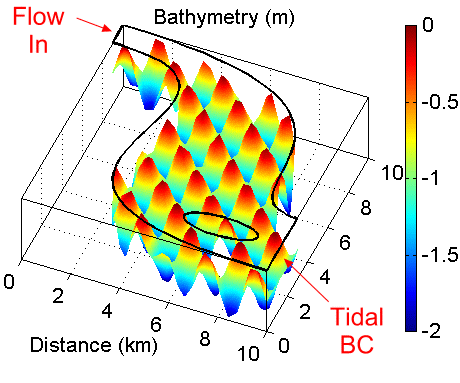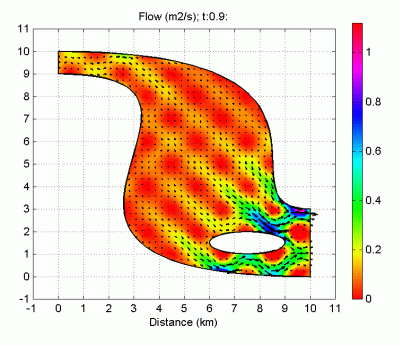For the test case, we use the geometry and bathymetry illustrated on the right. Since a source of strong non-linearities is the estuarine bathymetry, we use a Sin(x)Cos(y) generated surface for the test case. A constant flow in is specified at the upper boundary, while a 2 m sinusoidal tide (± 1 m) with a 12.42 h period drives the lower boundary. All other boundarys are specified as zero normal flow (i.e., slip BC).





